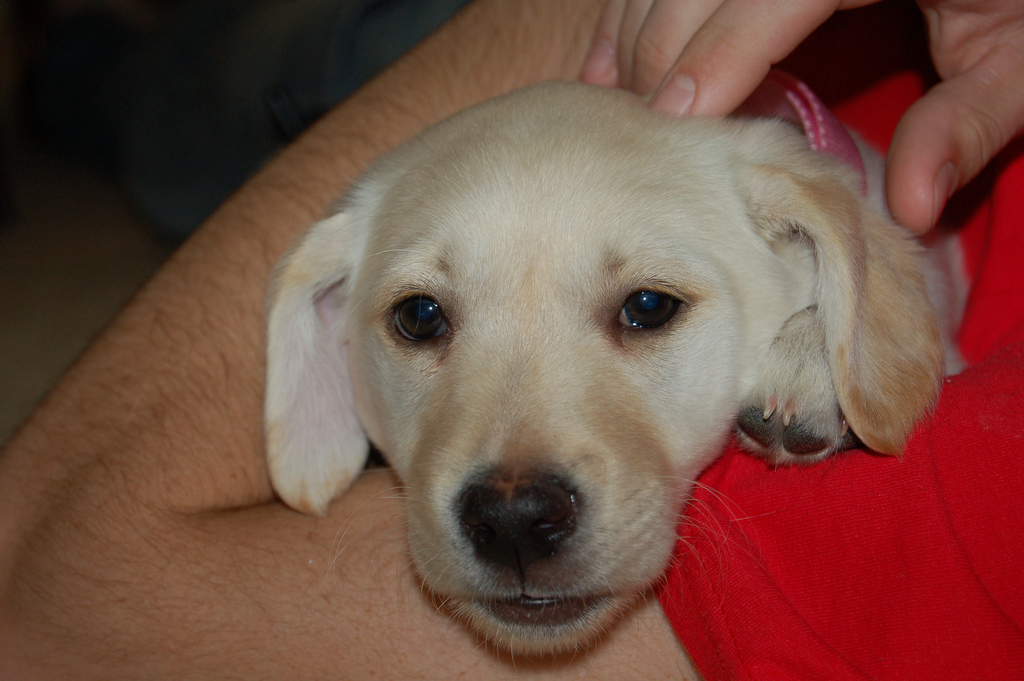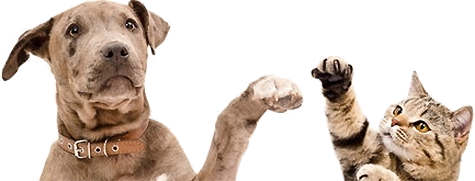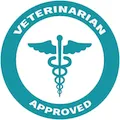
If you’ve ever witnessed your puppy hiccuping, you may have found it both endearing and worrisome. Our team at Webvet understands your concerns and is here to help you unravel the mystery behind puppy hiccups.
While human hiccups are very common, we will delve into the common causes of hiccups in puppies, provide valuable tips on how to help your puppy through them, and advise when to seek professional veterinary care. Our goal is to empower you with the knowledge you need to ensure the health and well-being of your furry companion.
So let’s explore the world of puppy hiccups together.
Table of Contents
What Are Hiccups?
Before we jump into how to deal with puppy hiccups, let’s try to understand what hiccups are and why they occur.
Hiccups are involuntary contractions of the diaphragm, the muscle responsible for controlling air movement in and out of the lungs. When the diaphragm experiences a sudden contraction, it leads to a quick intake of air. However, this air intake is abruptly stopped by the closure of the vocal cords, which produces the distinctive “hic” sound associated with hiccups.
While hiccups are generally harmless in humans and animals, sometimes they can be frustrating and uncomfortable. Now that we better understand what hiccups are, we can explore the various causes behind puppy hiccups and how to address them.
What Causes Hiccups in Puppies?
Hiccups can happen while puppies are in utero. The American Kennel Club says that hiccuping in the womb is a way of test-driving the breathing muscles.
There are several known causes of hiccups in puppies, including:
Rapid Eating and Drinking
Eating or drinking too quickly is usually the number-one culprit. When your puppy consumes food or water rapidly, it may swallow excessive air. This air intake can lead to spasms in the diaphragm, resulting in hiccups.
Excitement or Stress
Another common cause of hiccups in puppies is excitement or stress. Puppies, much like humans, can experience changes in their breathing patterns when they become overstimulated. This irregular breathing can cause the diaphragm to spasm, leading to hiccups.
Developing Diaphragm
Recognize that puppies are still growing and developing, including their diaphragm. As the diaphragm matures, hiccups may be a regular developmental process. While this cause of hiccups is not entirely preventable, understanding that it is a natural occurrence may help put you at ease if your puppy is experiencing hiccups.
Swallowing Air
Swallowing air can contribute to hiccups in puppies. As mentioned earlier, when puppies eat or drink too quickly, they are more likely to gulp down air, food, or water. This excess air intake can lead to spasms in the diaphragm, causing hiccups.
Tips for Preventing Puppy Hiccups
Although puppy hiccups are generally harmless, they can still be a source of discomfort for your pet. Puppies can experience episodes of hiccupping that may last several minutes.
Implementing a few simple strategies can help prevent hiccups in your puppy and promote their overall well-being.
- Slowing their eating and drinking: Slow-feed bowls or puzzle feeders can greatly reduce the amount of air your puppy swallows during meals, thus lowering the risk of hiccups.
- Regular exercise: Getting your puppy outside for daily exercise can help regulate their breathing patterns and reduce stress levels, which can contribute to hiccups.
- Provide a calm environment: Minimizing environmental stressors and creating a comfortable space for your puppy to relax can help prevent hiccups caused by excitement or stress.
- Gradual exposure to new experiences: To reduce the likelihood of hiccups due to excitement or stress, gradually expose your puppy to new experiences and environments. This slow introduction can help them develop coping skills and adapt to various situations without becoming overly stressed.
When To Take Your Puppy to the Vet
While almost all cases of puppy hiccups are harmless and will resolve themselves, it’s always best to check with your veterinarian if you notice hiccups becoming a regular issue.
Monitoring your puppy’s hiccups and being aware of any additional symptoms can help you determine when a visit to the vet is warranted. Here are some signs that you should consult your vet:
- Persistent hiccups: If your puppy’s hiccups persist for more than a few hours or occur frequently over several days, it’s a good idea to call your vet.
- Loss of appetite: If a loss of appetite accompanies your puppy’s hiccups, talk with your vet about food changes. There may be an underlying gastrointestinal issue.
- Difficulty breathing or signs of distress: If your puppy appears to be struggling to breathe, wheezing, coughing, or showing signs of discomfort during hiccups, seek emergency veterinary care as soon as possible.
Remember, it’s always better to be cautious about your puppy’s health. If you are unsure about your puppy’s hiccups or overall well-being, contact your vet for guidance and advice.
Demystifying Puppy Hiccups for a Happier, Healthier Pet
Navigating the world of puppy hiccups can be fascinating and fun for pet parents. By understanding the common causes of hiccups in puppies, you can ensure they stay just cute moments to enjoy for your furry friend.
Remember that puppy hiccups are typically harmless and a regular part of their development. However, monitor your puppy’s health for any concerning signs. With the knowledge and tips in this article, you can confidently address and manage your puppy’s hiccups.
Was YOUR Pet Food Recalled?
Check Now: Blue Buffalo • Science Diet • Purina • Wellness • 4health • Canine Carry Outs • Friskies • Taste of the Wild • See 200+ more brands…

To get a glimpse of the cute and comical side of puppy hiccups, check out this video:
FAQs
Q: Can I give my puppy something to help stop the hiccups?
A: While there is no specific medication to stop puppies’ hiccups, you can gently massage your puppy’s chest or encourage them to drink some water to help relax the diaphragm. Remember that hiccups usually resolve on their own and rarely require intervention.
Q: Can adult dogs get hiccups, or is this just a puppy issue?
A: Although hiccups are more common in puppies, adult dogs can experience them. The causes of hiccups in adult dogs can be similar to those in puppies, such as eating or drinking too quickly, excitement, or stress.
Q: Is it normal for my puppy to get hiccups while sleeping?
A: Yes! Puppies can experience hiccups while they are sleeping. This can occur due to involuntary muscle contractions or spasms in the diaphragm during their sleep.

This pet health content was reviewed for accuracy by a veterinarian, Dr. Pippa Elliott, BVMS, MRCVS. It was last reviewed and updated Feb. 4, 2019.



